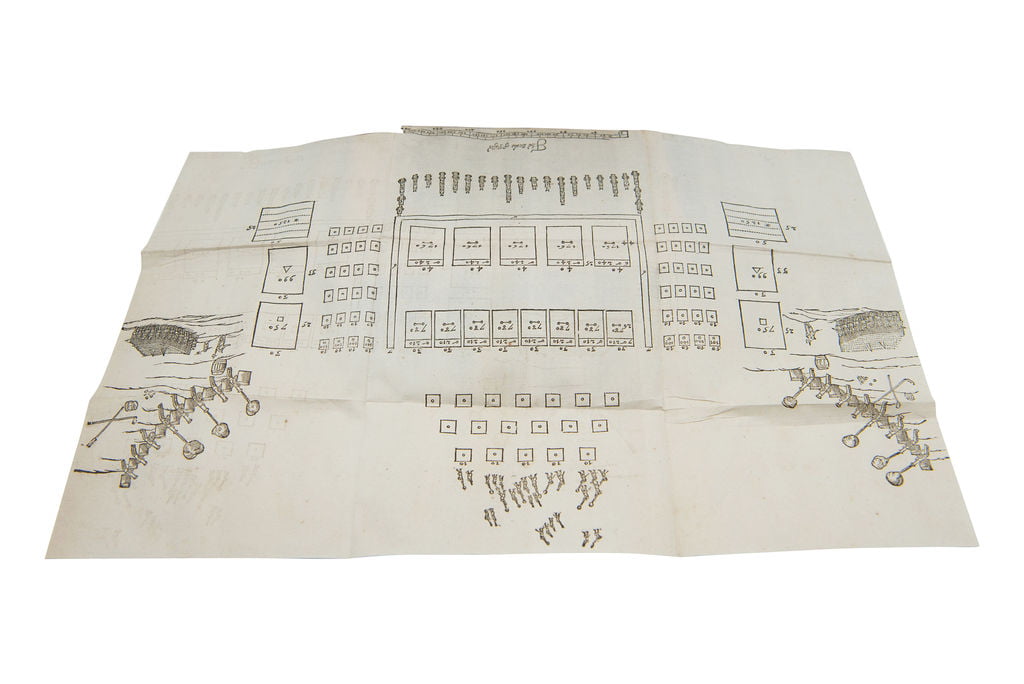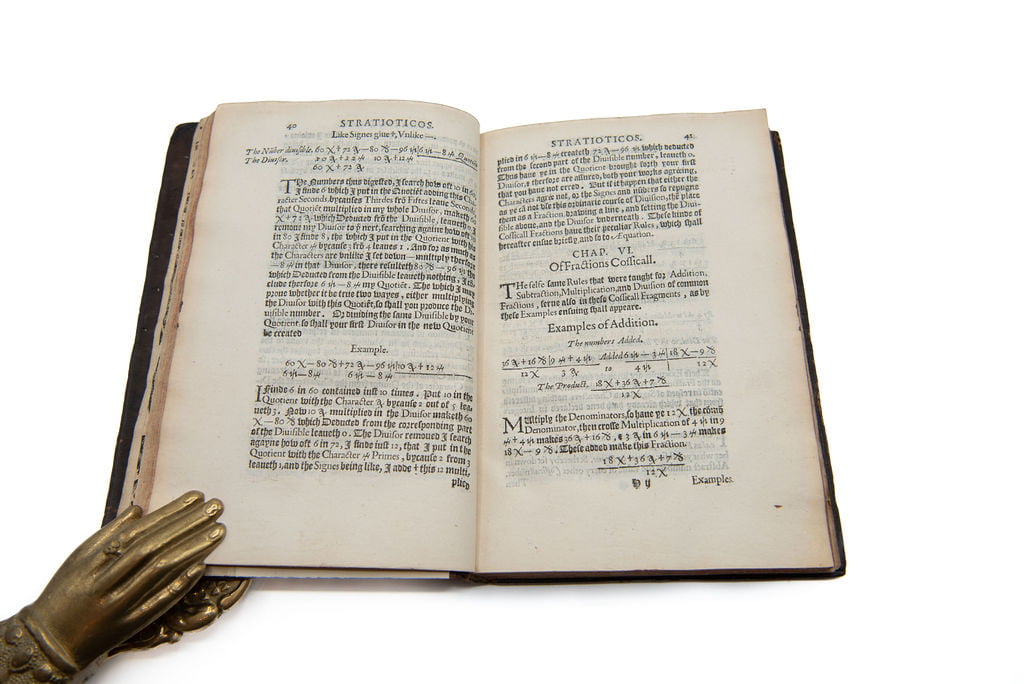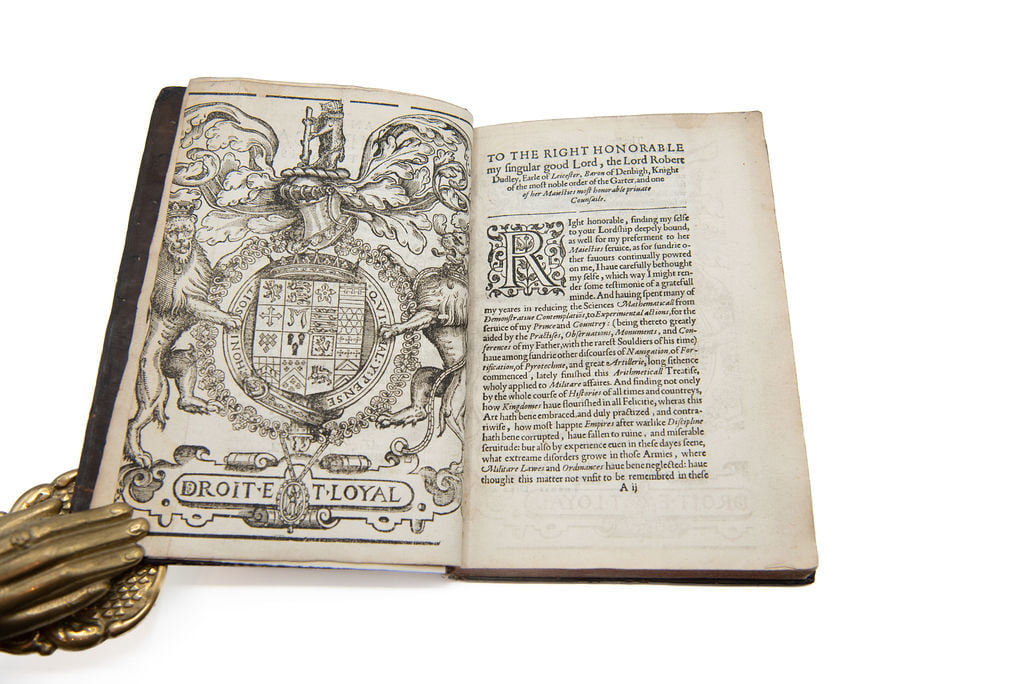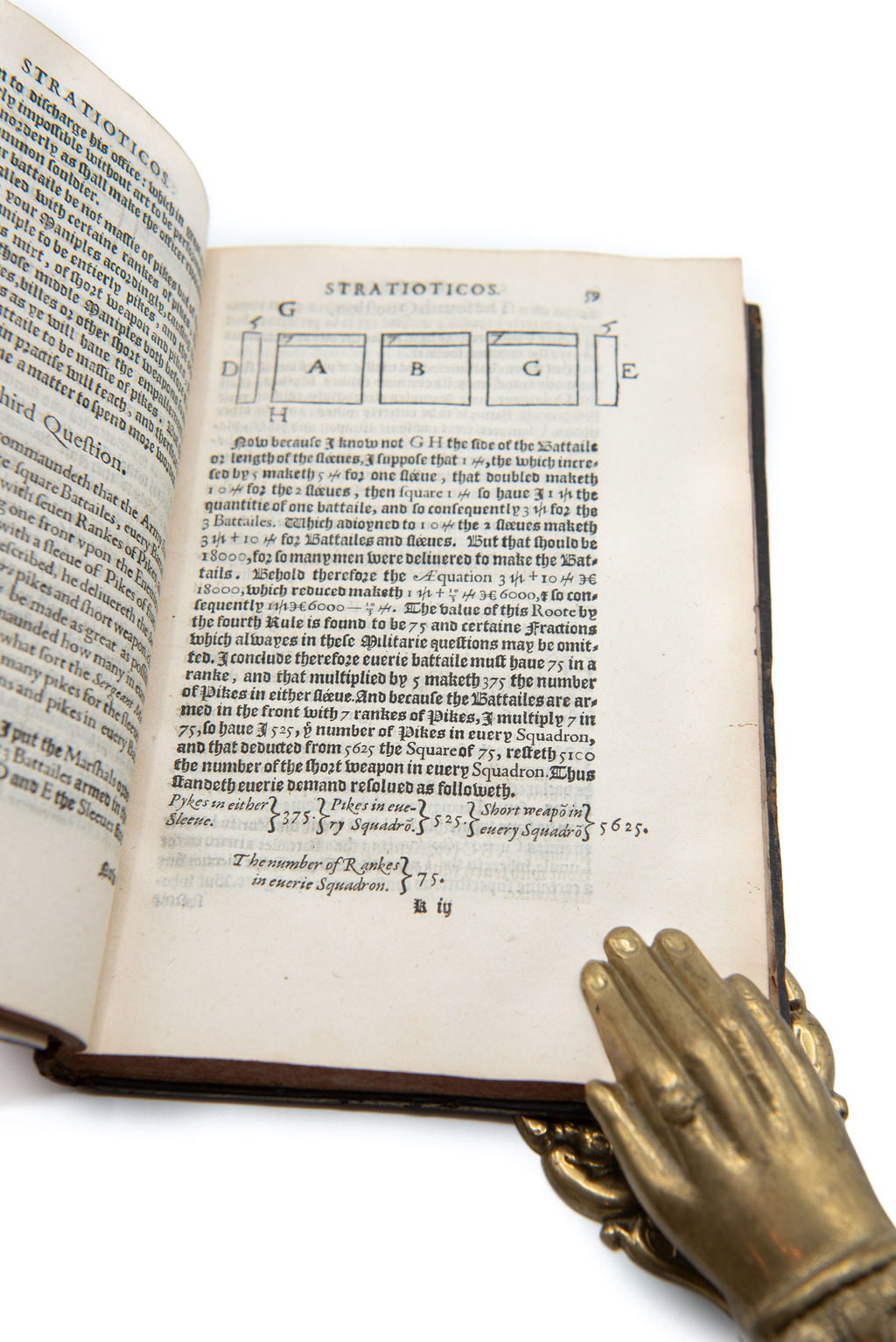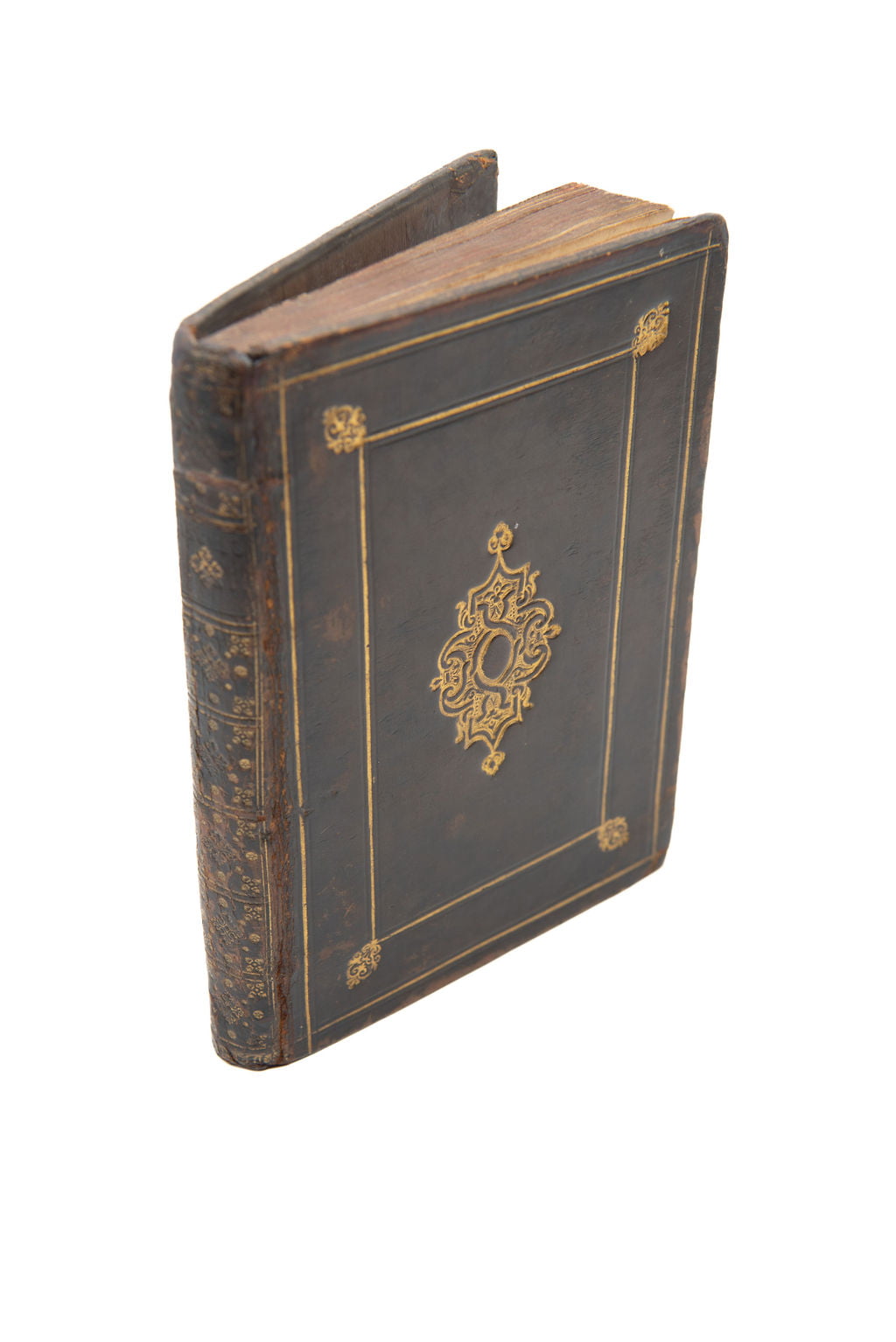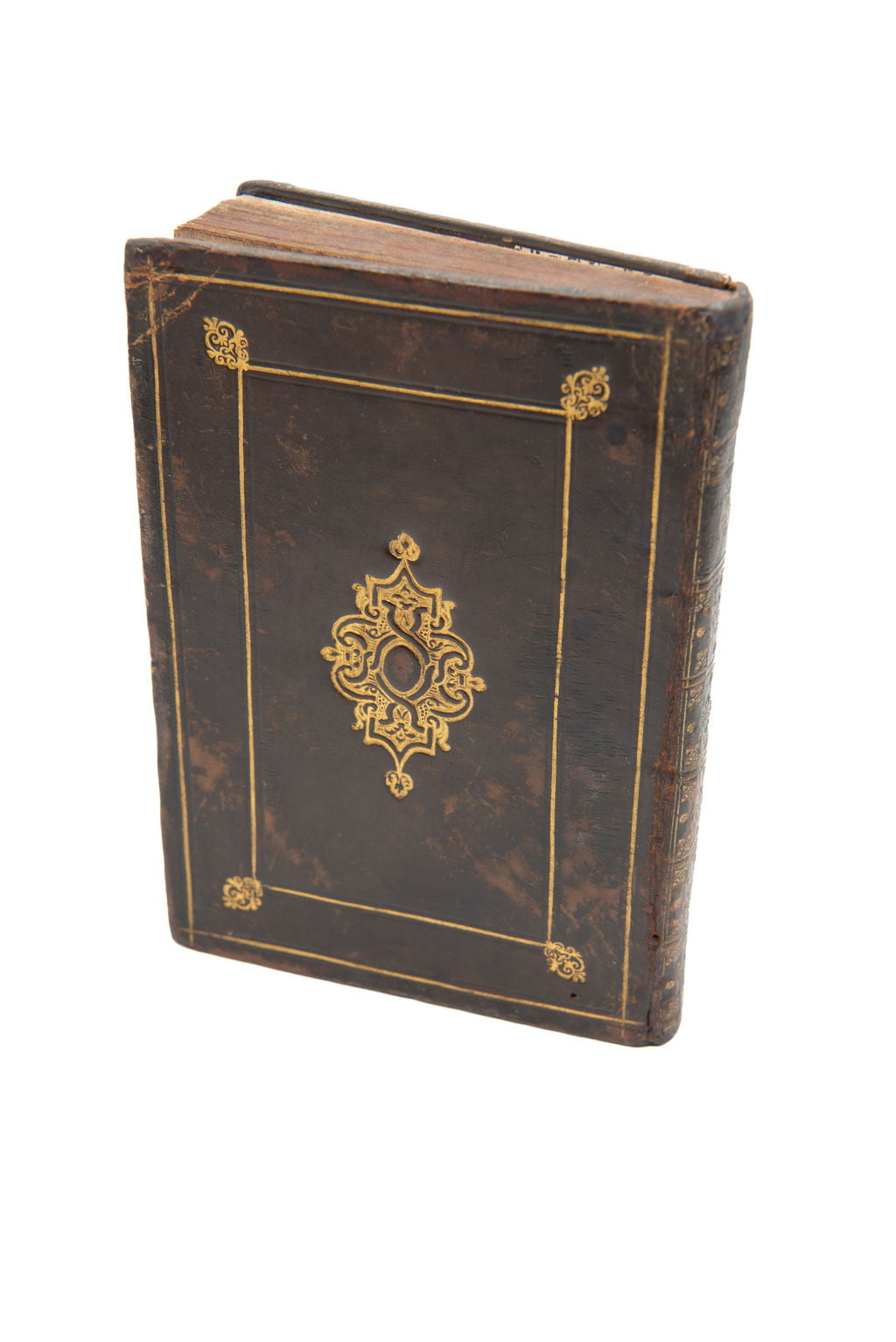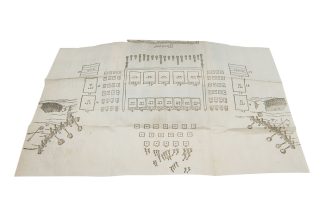DIGGES, Leonard & Thomas.
An Arithmetical Warlike Treatise named Stratioticos Compendiously teaching the Science of Nombers.
London, Richard Field, 1590£9,750.00
4to. Pp. (xiv) 380 (ii). Black letter, some Roman and Italic. Tp with ornamental woodcut, full page woodcut arms of Robert Dudley, Earl of Leicester (1532-1588) overleaf, outer edge trimmed. Woodcut floriated initials, ornamental tail pieces. Small woodcut mathematical diagrams, tables and shapes, large fold out diagram of ‘The Scale of Pases’, another showing a battle formation with soldiers, weapons and figures. Full page armorial woodcut and large printer’s device at end. Bookplate of Thomas Francis Fremantle, Lord Cottesloe (1862-1956) on pastedown. C16/C15 printed stubs in Gothic letter. Ms pencil annotations to contents pages with page numbers. Slight age yellowing, light water stain towards outer edge of first few leaves and to final blank, worming to lower blank margin pp. 290-350, a few blank corners torn away. A handsomely bound, good clean copy with generous margins in contemporary calf, gilt ornamental decorative pattern to centre of covers with smaller gilt decorative pattern around, ornamental gilt spine, joints a bit rubbed, small repair to head of spine and corners, some rubbing to edges, case or shelf mark to foredge, aer.
Impressive second edition of this important treatise on military mathematics by the father and son mathematicians and scientists, Leonard (c. 1515-1559) and Thomas Digges (c. 1546-1595). Leonard allegedly invented the theodolite, an instrument which measured angles in order to survey landscapes, as well as an early version of the telescope and he more generally popularised science through his many successful publications. Colin Ronan claims that Leonard was, in fact, the first inventor of the telescope instead of Galileo (Ronan, ‘Leonard and Thomas Digges’, 1992). Thomas published the first book on Copernican theory in English, and collaborated with, expanded on and annotated a great deal of his father’s works. The men were fascinated with geometry, navigation and mathematics, especially the intersection of these with military and artillery related matters. In January 1554 Leonard Digges took part in the unsuccessful revolt against the marriage of Philip II of Spain with Mary I, led by Protestant Sir Thomas Wyatt, and was convicted and sentenced to death. He was pardoned however, but died a few years later, leaving his young son to the guardianship of John Dee (1527-1608), a Renaissance natural philosopher. Like his father, the younger Digges took an interest in military matters on top of his scholarly research. He was a Muster-Master General for the English forces from 1586-1594 during the war with the Spanish in the Netherlands. This work derives from preliminary notes and research by Leonard, but was compiled and published by Thomas.
The Stratioticos was first published in 1579 in three books, of which the first was based on a surviving draft in Leonard’s hand. The 1590 edition was expanded by Thomas and is a fine example of military science from this era. It demonstrates Thomas’ switch from “contemplative concerns with mathematical demonstration to a new emphasis on practical actions in service of prince and country.” (Johnston, ‘Making mathematical practice: gentlemen, practitioners and artisans in Elizabethan English’, 1994). The book begins with a short introduction on basic arithmetical principles, taken from notes compiled by Leonard, and then commences with an algebraic sum which calculates the efficient use of a soldier, with examples, as well as an in depth discussion of the differing ranks in an army and the associated good and bad traits of these. Underlying this was the possibility of the Earl of Leicester taking an expedition against the Spanish in the Netherlands. The younger Digges had been advising Leicester on this mission and the book was even given to Leicester to read in manuscript form. A key theme of the work is Digges’ insistence on the preparedness of soldiers and military discipline. As well as this, he insists on a number of qualities when considering the ideal military leader. He must be “the most learned, virtuous, experienced, and religious of men” as well as having classical, mathematical and historical knowledge (Johnston, 1994). This work corrects various errors from the first edition, and artillery questions and theories are reprinted and resolved by providing additional answers.
Cockle 25 states “one of the best military books of the time”. He also asserts “Digges (junior) criticises Santbech, Ruscelli, and others, who, he says, attempted to write on the science of gunnery, without having knowledge of mathematics.”
This work is from the library of renowned military literature collector Thomas Francis Fremantle, Lord Cottesloe (1862-1956). Lord Cottesloe acquired one of the most complete collections of military books.
ESTC S109690; Lowndes II 646; Cockle 25.In stock


